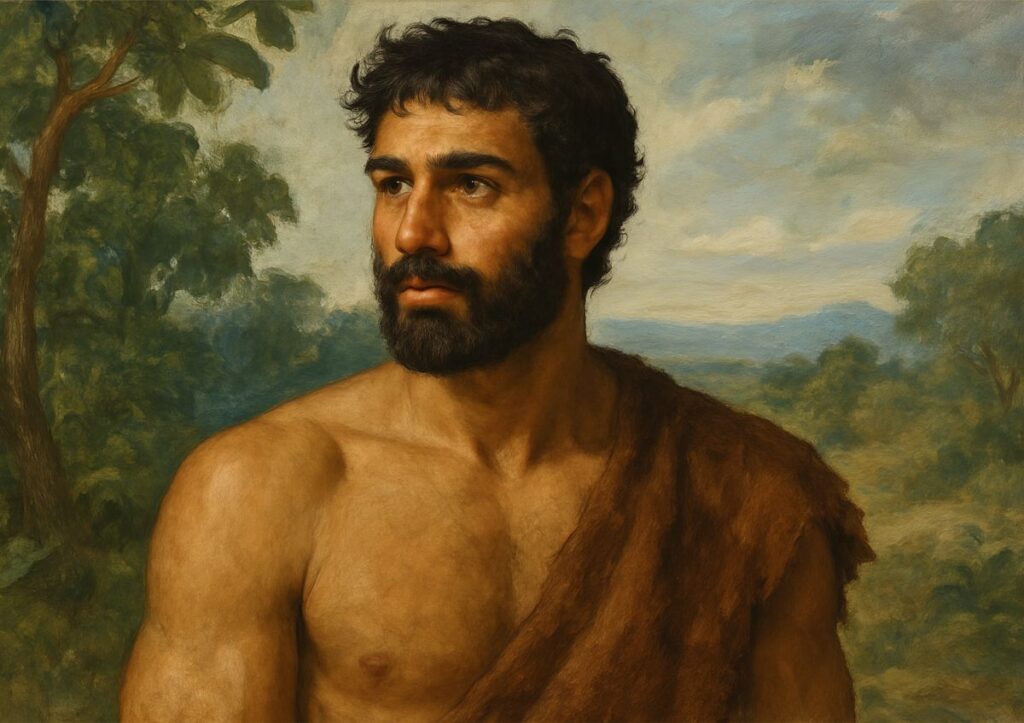Who Is Adam in the Bible?
Adam is the first human being created by God, according to the Bible. His name in Hebrew (אָדָם, ‘adam’) means “man” or “mankind.” He is a central figure in the book of Genesis, chapters 1–5, and is foundational to the Christian understanding of humanity, sin, and salvation.

Biblical Account
➤ Creation (Genesis 1:26–27; 2:7)
- God created Adam from the dust of the ground and breathed life into his nostrils, making him a living being.
- He was made in the image and likeness of God, meaning he carried divine attributes such as reason, creativity, morality, and relational capacity.
- God placed Adam in the Garden of Eden, a perfect environment, and gave him responsibility to work it and take care of it.
➤ Purpose and Dominion
- Adam was given dominion over all creation (Genesis 1:28).
- He was tasked with naming all the animals, which reflected authority and stewardship.
- He was created to be in relationship with God, walking with Him intimately in the garden.
➤ Eve and the First Marriage (Genesis 2:18–25)
- Seeing that it was “not good for man to be alone,” God made a suitable helper: Eve, formed from Adam’s rib.
- Their union was the first marriage, establishing God’s design for family and companionship.
- Adam joyfully received Eve, calling her “bone of my bones and flesh of my flesh.”
The Fall of Man (Genesis 3)
- Adam and Eve were commanded not to eat from the Tree of the Knowledge of Good and Evil, or they would die.
- Tempted by the serpent, Eve ate the fruit and gave it to Adam, who also ate.
- Their disobedience brought sin, shame, and death into the world. This is known as “The Fall.”
- As a result:
- They were banished from Eden.
- Curses entered the world: pain, toil, and mortality.
- Spiritual separation from God occurred.
Theological Significance
1. Federal Headship
- Adam is considered the federal head or representative of all humanity.
- According to Romans 5:12–19, Adam’s sin brought death to all, but through Jesus (the Second Adam), righteousness and life are made available.
2. Original Sin
- Adam’s sin affected the entire human race. This is the basis of the doctrine of original sin—that all humans are born with a sinful nature.
3. Foreshadowing Christ
- Adam is a “type” of Christ (Romans 5:14).
- Where Adam failed, Jesus triumphed. Adam brought death through disobedience, but Jesus brought life through obedience (1 Corinthians 15:21–22).
Lessons from Adam’s Life
- Obedience matters—One act of disobedience brought enormous consequences.
- Responsibility is sacred—Adam was entrusted with creation and family, reminding us that stewardship is a divine calling.
- Sin separates, but God seeks—Even after Adam sinned, God came looking for him (Genesis 3:9). God’s heart is always to restore relationship.
- Jesus is the solution—Where Adam brought a curse, Jesus brings the cure.
Summary
Adam is not just a historical figure but a symbol of humanity’s journey—from intimacy with God, to rebellion, and the need for redemption. His life teaches us about the nature of sin, responsibility, and the incredible grace of God through Jesus Christ.